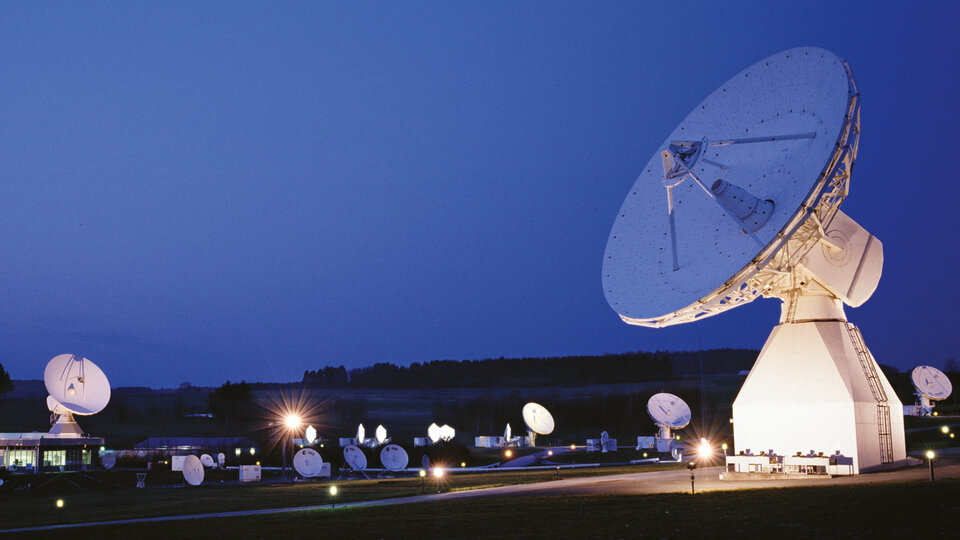Proba-3 double satellites set for launch following last test
In a final test before its shipping to its Indian launch site, ESA’s eclipse-making double-satellite Proba-3 mission has received commands from its science team and transmitted images back, exactly as it will operate in orbit.

Proba-3 is an extremely technically and scientifically ambitious mission. Through exquisite, millimetre-scale, formation flying, its dual satellites will accomplish what was previously a space mission impossible: one platform will cast a precisely held shadow onto the other, in the process blocking out the fiery Sun to observe its ghostly surrounding atmosphere on a prolonged basis.
The last in a series of five ‘System Validation Tests’ for the mission involved scientists at the Royal Observatory of Belgium in Brussels sending payload operation requests to the mission’s control centre at ESA ESEC, the European Space Security and Education Centre, across the country at Redu.

The control centre processed these requests then sent telecommands to the science instruments aboard the Proba-3 spacecraft, currently located in a cleanroom at Redwire Space in Kruibeke, to manage the requested scientific observations in a fully automated fashion.
Now its testing is complete, Proba-3 will now be shipped to the Satish Dhawan Space Centre in India on 21 October for a planned launch by PSLV-XL launcher on 29 November.

Its latest test spanned 12 hours in all, replicating part of Proba-3’s highly elliptical 19.5 hour orbit around Earth, with its formation flying for observing the solar corona taking place over a six hour period around apogee, meaning the top of its 60 000 km orbit.
The two satellites’ formation flying will take place on a fully autonomous basis, but the testing included the sending of commands to science instruments for both in-flight calibration scenario and nominal scientific observation, as well as the update of some commands to be replaced with others. That latter functionality provides flexibility to the scientists to quickly react to exceptional solar events.

“Based around progressively more ambitious scenarios, these System Validation Tests (SVTs) replicate the full chain of operations associated with the mission, performed using the actual ground segment facilities and software that will be used during flight” explains Proba-3 systems engineer Raphael Rougeot.
“They also involve the actual people who will be overseeing the mission: the team from Redwire who will be performing the Launch and Early Orbit activities from ESEC plus the ESA personnel who will take over during the operational phase, along with support from prime contractor Sener in Spain – plus the Proba-3 science instrument team themselves of course.

“We are basically checking the overall operability of the spacecraft, to ensure that data can move freely to and from the ground segment to the satellites without any unforeseen problems, so that the mission in space will run as flawlessly as possible. In fact, one of the Proba-3 mission’s key characteristics is a highly automated ground and flight system.”

Proba-3 system engineer Esther Bastida Pertegaz adds: “The mission controllers have previously practiced operating the satellites in advance of the SVTs, when they were on the other side of the glass at Redwire. But there is something much more realistic about operating the satellites remotely from our actual mission control site – the feel is as if they are already operating in space.”
“Proba-3’s ASPIICS coronagraph instrument of course had its protective door stay closed during the testing, but it did return a recognisable image of the internal coronagraph within it to the Royal Observatory of Belgium team.”

The only element of Proba-3’s ground segment not involved in the SVT testing is the actual ground stations dotted around the globe that will maintain contact with the satellites during each high-climbing orbit: Santiago in Chile, Yatharagga in Australia, Maspalomas on Gran Canaria and Villafranca near Madrid.
Made up of Coronagraph and Occulter satellites, Proba-3 is the latest in an ESA family of experimental minisatellites dating back to 2001, the name coming from the Latin for ‘Let’s try!’.


Access the video














 Germany
Germany
 Austria
Austria
 Belgium
Belgium
 Denmark
Denmark
 Spain
Spain
 Estonia
Estonia
 Finland
Finland
 France
France
 Greece
Greece
 Hungary
Hungary
 Ireland
Ireland
 Italy
Italy
 Luxembourg
Luxembourg
 Norway
Norway
 The Netherlands
The Netherlands
 Poland
Poland
 Portugal
Portugal
 Czechia
Czechia
 Romania
Romania
 United Kingdom
United Kingdom
 Slovenia
Slovenia
 Sweden
Sweden
 Switzerland
Switzerland

























